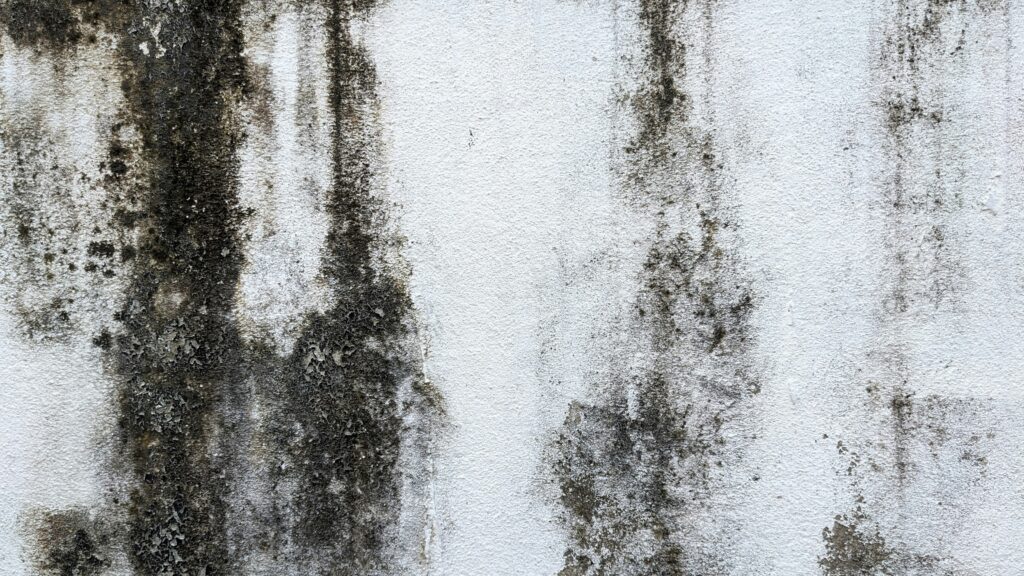What Texas Homeowners Need to Know About How to Kill Mold
In Texas’s humid climate, mold growth is a common concern for homeowners and businesses. When faced with mold, many property owners reach for bleach as their first line of defense. While bleach is known for its strong disinfecting properties, it’s not always effective in fully killing or removing mold—especially on porous surfaces. At CWF Restoration, we frequently educate Texas property owners about the limitations of bleach for mold remediation, particularly given our state’s unique climate challenges.

How Bleach Interacts with Mold on Different Surfaces
Bleach can kill mold on hard, non-porous surfaces like glass, tile, and countertops. On these surfaces, bleach may temporarily eliminate mold by cleaning surface-level spores and stains. However, on porous materials common in Texas homes—like drywall, wood framing, and textiles—bleach struggles to penetrate deeply enough to reach the mold’s root system. This is particularly problematic in our climate, where high humidity levels can cause mold to embed itself more deeply within porous building materials.
Bleach may be ineffective on common building materials used in Dallas and Houston homes
Common building materials in Texas homes present specific challenges:
- Drywall: Especially vulnerable in humid conditions, with mold often penetrating deeply
- Wooden studs and framing: Particularly susceptible in areas with poor ventilation
- Ceiling tiles: Often affected by HVAC condensation in our hot climate
- Plywood and OSB sheathing: Frequently impacted in humid attic spaces
Does Bleach Prevent Mold Regrowth?
When bleach is applied to porous materials, it only addresses the mold on the surface. The water content in bleach can actually increase moisture in the area, potentially worsening the problem by encouraging mold growth over time. This is particularly problematic in Texas, where our high humidity levels already create ideal conditions for mold growth. Because bleach cannot reach deep mold roots, it fails to prevent mold from reappearing, especially in:
- Bathroom walls and ceilings where humidity is consistently high
- Baseboards affected by rising damp in slab foundations
- Interior walls exposed to condensation from AC systems
- Closets and storage areas with poor ventilation
The Impact of Texas Climate on Mold Growth
Our state’s unique climate conditions make mold remediation particularly challenging:
- High humidity levels throughout much of the year
- Frequent temperature fluctuations that create condensation
- Extended cooling seasons that can lead to HVAC-related moisture issues
- Storm and flooding events that create ideal conditions for mold growth
Limited Uses of Bleach in Mold Removal
Bleach should only be used in very specific situations:
- Small areas of surface mold (less than 10 square feet)
- Non-porous surfaces like glass, tile, or metal
- Well-ventilated spaces
- Areas with no existing moisture issues
Never use bleach for serious mold problems. Instead, contact professional remediation services, especially given Texas’s strict guidelines for mold remediation under the Texas Department of State Health Services regulations.
Health Risks and Safety Considerations
Using bleach for mold removal in Texas presents specific challenges:
- Increased volatility of bleach fumes in our warm climate
- Greater risk of chemical interaction in poorly ventilated spaces
- Heightened respiratory concerns when combined with existing allergens
- Additional precautions needed during our hot summer months
Better Bleach Alternatives for Killing Mold
Instead of bleach, consider these more effective approaches:
For Minor Mold Issues:
- Vinegar solutions (effective in humidity)
- EPA-registered antimicrobial products
- Commercial mold cleaners designed for humid environments
For Significant Mold Problems:
- Professional mold remediation services from CWF Restoration
- Licensed Texas mold assessment and remediation experts
- Comprehensive moisture control solutions
When to Call Professional Help
Contact CWF Restoration immediately if:
- Mold covers an area larger than 10 square feet
- You detect musty odors but can’t locate the source
- There’s a history of water damage or flooding
- You or family members experience unexplained respiratory issues
- The mold is on a porous surface, such as wood, drywall, or insulation
Our teams in Houston and Dallas are specially trained in addressing mold issues specific to Texas properties.
Let CWF Restoration Remediate Your Mold
Don’t let mold become a recurring problem in your Texas property. Contact CWF Restoration at 1-800-818-7035 for effective mold solutions. Our experienced team uses proven methods and professional-grade equipment to fully remove mold, address root causes, and restore a safe environment.
Prevention Tips for Texas Homeowners
Given our climate, prevention is crucial:
- Maintain indoor humidity below 60%
- Regular HVAC maintenance and cleaning
- Proper ventilation in bathrooms and kitchens
- Quick response to water leaks and flooding
- Regular inspections during humid seasons
Remember, while bleach might seem like a quick fix, professional mold remediation ensures thorough removal and helps prevent future growth in Texas’s challenging climate.

